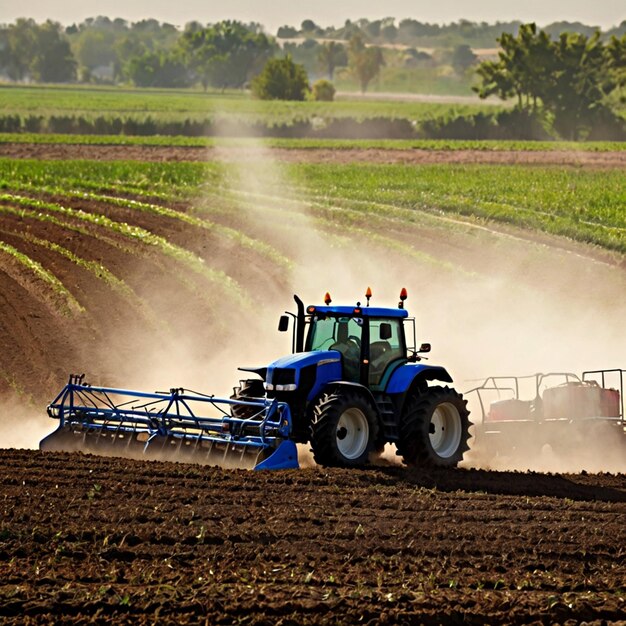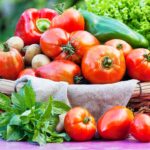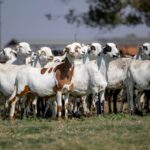Sustainable farming is more than a trend—it is a necessity for South African farmers who want to protect their land, improve yields, and contribute to long-term food security. With changing climate patterns, soil degradation, and growing resource constraints, adopting sustainable farming practices has become essential. In this guide, we provide practical tips for South African farmers to transition toward more sustainable farming methods that promote environmental health, economic profitability, and social equity.
1. Soil Health and Conservation
Healthy soil is the foundation of sustainable farming. Implementing practices that improve soil fertility and prevent degradation is key to long-term agricultural productivity.
- Crop Rotation: Rotating crops helps maintain soil health by preventing nutrient depletion and reducing the risk of pest infestations. For example, alternating nitrogen-fixing crops like legumes with grain crops can naturally replenish soil nutrients.
- Cover Cropping: Planting cover crops like clover, rye, or mustard during the off-season protects the soil from erosion and adds organic matter. Cover crops also help suppress weeds and improve water retention.
- Reduced Tillage: Minimizing tillage reduces soil disruption, helps retain moisture, and prevents erosion. Conservation tillage techniques, like no-till or strip-till farming, can improve soil structure and increase organic matter over time.
2. Water Management
In South Africa, where water scarcity is a pressing issue, efficient water use is vital for sustainable farming.
- Drip Irrigation: This method delivers water directly to plant roots, reducing water wastage from evaporation and runoff. Drip irrigation systems are highly efficient, especially in arid regions.
- Rainwater Harvesting: Capturing and storing rainwater for irrigation purposes can reduce dependence on external water sources. Installing water tanks and proper catchment systems allows farmers to store water for dry periods.
- Mulching: Applying organic mulch around crops helps retain soil moisture, reduces evaporation, and protects plants from extreme temperatures. Mulch also adds organic matter to the soil as it decomposes.
3. Integrated Pest Management (IPM)
Instead of relying solely on chemical pesticides, Integrated Pest Management (IPM) uses a combination of techniques to manage pests in a way that minimizes harm to the environment.
- Biological Control: Introduce beneficial insects like ladybugs, lacewings, and parasitic wasps to control pests naturally. Encouraging these predators can reduce the need for chemical pesticides.
- Companion Planting: Certain plants can repel pests or attract beneficial insects when grown together. For example, planting marigolds alongside crops can deter nematodes and other harmful insects.
- Crop Monitoring: Regularly inspect crops for early signs of pest infestations or disease. Early detection allows for targeted interventions, reducing the need for broad-spectrum pesticides.
4. Use of Renewable Energy
Transitioning to renewable energy sources can significantly reduce the carbon footprint of a farming operation and lower long-term energy costs.
- Solar Power: South Africa has abundant sunlight, making solar power an ideal energy source for farms. Solar panels can be used to power irrigation systems, electric fences, and other farm equipment, reducing reliance on fossil fuels.
- Wind Energy: Small-scale wind turbines can generate electricity for farms in areas with consistent wind. This can help power farm operations and reduce energy costs.
5. Efficient Use of Fertilizers
Overusing chemical fertilizers can lead to soil degradation and water pollution. Sustainable farming promotes the responsible use of fertilizers to ensure soil fertility without harming the environment.
- Composting: Organic compost adds essential nutrients to the soil without the negative impacts of synthetic fertilizers. Farmers can create their own compost from crop residues, manure, and other organic waste.
- Precision Fertilization: Apply fertilizers based on the specific nutrient needs of the soil, as determined by soil tests. This reduces overapplication and minimizes nutrient runoff into waterways.
6. Agroforestry
Agroforestry is the practice of integrating trees and shrubs into crop and livestock systems. This approach provides multiple benefits, including improved biodiversity, soil fertility, and carbon sequestration.
- Windbreaks: Planting trees along the edges of fields can serve as windbreaks, reducing wind erosion and protecting crops. These trees also provide habitat for wildlife and contribute to biodiversity.
- Silvopasture: This involves integrating trees into grazing systems. Trees provide shade for livestock, improve soil health, and contribute to long-term carbon storage.
7. Diversification of Crops and Livestock
Diversifying the types of crops grown or animals raised on a farm can increase resilience to market fluctuations, climate change, and pests.
- Polyculture: Growing a variety of crops together can reduce the risks associated with monoculture, such as soil depletion and pest outbreaks. Diverse plantings promote a healthier ecosystem and improve resilience.
- Mixed Farming: Incorporating both crops and livestock into a farm system allows for the recycling of nutrients. Livestock manure can be used to fertilize fields, while crop residues can feed animals.
8. Sustainable Livestock Practices
For livestock farmers, adopting practices that promote animal welfare and environmental health is crucial.
- Rotational Grazing: Rotating livestock between different pasture areas allows grass to recover, reduces overgrazing, and improves soil health. This also helps in reducing soil erosion and promoting biodiversity.
- Water Conservation for Livestock: Provide shaded areas for animals to reduce water consumption and evaporation. Installing troughs with automatic waterers can also minimize water waste.
9. Local Market Engagement
Building strong connections with local consumers can enhance the sustainability of a farm by reducing transportation costs and supporting the local economy.
- Farm-to-Table Sales: Selling directly to consumers through farmers’ markets, community-supported agriculture (CSA) programs, or farm stalls can increase profitability and reduce reliance on middlemen.
- Value-Added Products: Farmers can process their raw products into value-added goods like jams, cheeses, or pickled vegetables. This not only diversifies income streams but also reduces food waste.
10. Sustainable Certifications
Pursuing certifications such as organic, Fair Trade, or Rainforest Alliance can help farmers access premium markets and earn higher prices for sustainably produced goods.
- Organic Certification: Organic farming eliminates the use of synthetic fertilizers and pesticides, relying instead on natural methods. Achieving organic certification can increase market demand and open doors to export opportunities.
- Fair Trade: Fair Trade certification ensures that farmers are paid a fair price for their products and that labor practices are ethical. This can improve a farm’s reputation and attract socially conscious consumers.
Sustainable farming offers South African farmers the opportunity to produce food in a way that is environmentally responsible, economically viable, and socially equitable. By focusing on soil health, water conservation, pest management, renewable energy, and biodiversity, farmers can improve their resilience to climate change and market fluctuations. Adopting these sustainable practices ensures not only the survival of farming operations but also the long-term health of the land and communities that depend on it. Sustainable farming is the key to feeding the future, preserving natural resources, and fostering a thriving agricultural sector in South Africa.
Join 'Farmers Mag' WhatsApp Channel
Get the latest Farming news and tips delivered straight to your WhatsApp
CLICK HERE TO JOIN






